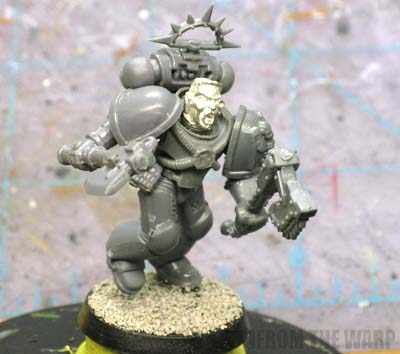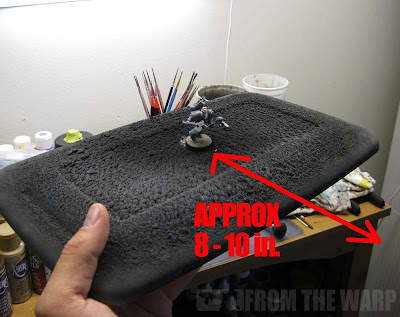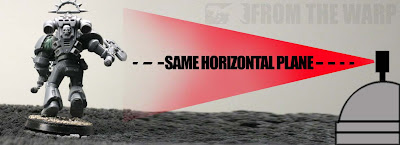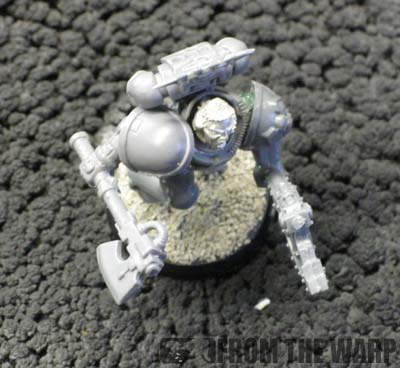
Since posting about priming models on Monday, I realized that the title may have been misleading in that I did not actually include the "how" part when it comes to how I prime my models. We'll remedy that here.
Going back to the first post, I use spray paint to prime my models. It's one of two colors the majority of the time as well. The other tool I use is my priming board. It's really the lid from an small tupperware bin that I claimed a long time ago. It's just big enough to set a Land Raider on top without falling over. You can use anything really, some folks hold each model in their hand while wearing protective gloves.
By using the board, I can batch prime three models at a time. If I do batch prime, the only thing I have to watch out for is getting too much paint on any one particular model. So I generally do one model at a time.

This is what the board looks like. I took a minute and measured the distance I hold my spray can at when I prime as well. The average distance is 8 - 10 inches. That's around 20 - 25 cm or so for you guys across the pond if my math is correct.
If I back up much further, I'll start to get a fuzzy texture on the surface of the model. Much closer and the paint will pool on the surface and drip.
NOTE: I prime year round, the only exception being when it is physically raining. That means in the cold, in the humidity, whatever it may be. I just step outside (with the wind to my back), give the model a quick spray and then bring it back in to dry. I've found that if I shake my can well enough before starting, I don't have any issues.
How to hold the model
As I make each pass with the paint, I rotate the model slightly. I'd guess around 45 degrees or so for each pass. It depends on how the model is posed and how hard it is to get to all the inside surfaces.

How do actually spray paint the model?
I have two methods I use when priming. The first is a horizontal pass and the second is a vertical pass. It comes down to how I hold the model.
With the horizontal pass, this covers the majority of the model. There are a few things you have to do to get the best results though. The first thing is to make sure your can is moving AND you start spraying before you pass over the model. The second thing is to make sure you don't stop spraying until you're past the model as well.

The horizontal pass is done at True Line of Sight for the model. That means I hold the model up so I am spraying on the same horizontal plane as the model. If you're a bit high or low when doing this, you may accidentally miss some areas depending on how the model is posed.

If you look at the picture above, you'd be following the green line as you move your spray can. Once you start moving, you'll want to start actually spraying just before you get to the model and end just after (the red line). You can go left or right when you make your passes, that part doesn't matter. This keeps you from getting too much paint on the model and having it pool.
I move fairly quickly in my passes as well. If you go too slow, you run the risk of pooling or obscuring the finer detail. It usually takes me two revolutions of a model to get the whole thing done. Don't try and do it all in one pass. Two lighter coats is far better than one heavy coat that may run or cover details.

And the final vertical pass for good measure
Once I have my model primed using the horizontal pass method, I tilt it so I'm almost vertical and make a few passes from the top down to get the upper areas I missed. And again, all the same things apply here as well, the distance, the starting and stopping and the lighter coats as opposed to heavy ones.
Finishing off the model
This method gets 99 percent of the model covered. I don't worry too much about the basing as that's usually given a good basecoat anyway later on to help seal in all the tiny elements like sand and rocks.
For the areas I do happen to miss, I go back in with some regular paint from a pot and touch up as needed. I find having to go back and touch up is still better than trying to do it all with the spray paint and forcing it to work when it isn't doing the best job.
I'd rather spend and extra minute and get good coverage that won't kill my details than to try and force the spray paint into a void space and have it run and pool on the surface of the model.
Make sure to check out these posts as they might help:
Things to consider when priming
Priming using other colors than black or white
